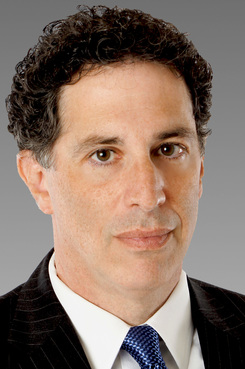Patent Office Improves Examination of Software Patent Applications
Explanation. When the U.S. government denies us legal protection, we want to know why. Accompanying an adverse decision in the legal world, we want an explanation to support the adverse decision so we can understand how the decision was made.
May 22, 2018 at 01:37 PM
6 minute read

Explanation. When the U.S. government denies us legal protection, we want to know why. Accompanying an adverse decision in the legal world, we want an explanation to support the adverse decision so we can understand how the decision was made.
The process of obtaining certain types of software patents from the U.S. Patent and Trademark Office (PTO) has been very frustrating over the past few years, with many applicants expending tremendous resources, walking away empty handed and not having a clear explanation of why the PTO rejected their applications. Prior to 2014, it was possible to obtain a so-called “business method patent” (a patent on a method of doing business). Then, the business method world imploded when the U.S. Supreme Court decided Alice v. CLS Bank (134 S. Ct. 2347 (2014)) and held that methods of doing business were not patent eligible. In the aftermath, many technology companies that had invested significant dollars to create computer technology found themselves caught in the Alice crosshairs, and their ability to protect their innovations disappeared as quickly as the rabbit in the storybook Alice (in Wonderland) popped down the rabbit hole.
Alice requires that the PTO and the courts conduct a two-step process to determine if patent claims meet patent subject matter eligibility requirements. The first step requires that the claimed invention be “statutory subject matter”—a process, machine, manufacture or composition of matter. Step two requires that, if the claimed subject matter is a law of nature, a natural phenomenon, or an abstract idea, then the claimed subject matter must recite “significantly more” to be patent eligible.
One of the more frustrating aspects of the Alice aftermath has been how the PTO has refused to grant patent protection for software inventions. Attorneys and the PTO often get locked into heated arguments over whether a particular invention includes a “significantly more” feature. Whether a feature of an invention is “significantly more” under Alice is determined based on whether it includes “well-understood, routine, conventional activities previously known to the industry.” If the feature is more than “well understood, routine, conventional,” then the requirements for patent subject matter eligibility are met. Unfortunately, the PTO has often addressed this issue with conclusory statements and no explanation. PTO examiners have argued that features were routine based on their own personal opinions, and with no evidence to back up their positions. As a result, patent applications were rejected as being directed to patent-ineligible subject matter, and without sufficient evidence to support that position.
Then, an interesting court opinion was published in February (Berkheimer v. HP, 17-1437 (Fed. Cir. 2018)). Steven Berkheimer had sued Hewlett-Packard (HP) for infringing his patent for digitally processing and archiving files. The district court ruled that Berkheimer's patent was invalid, because it was directed to patent-ineligible subject matter. Specifically, the court stated that Berkheimer's inventive concept failed the second step of the Alice test because his invention related to “steps that employ only well understood, routine, and conventional computer functions.” On appeal, Berkheimer argued that whether an invention is “well understood, routine and conventional is an underlying fact question for which HP offered no evidence.” The U.S. Court of Appeals for the Federal Circuit agreed with Berkheimer, and remanded the case to the district court so that the necessary factual determination could be made.
In a speech delivered to the U.S. Chamber of Commerce on April 11, 2018, PTO Director Andrei Iancu remarked that “current law surrounding patentable subject matter has created a more unpredictable patent landscape that is hurting innovation and consequently, investment and job creation.” He noted that Alice has “inserted standards into our interpretation of the statute that are difficult to follow,” and the PTO is “actively looking for ways to simplify the eligibility determination for our examiners through forward-looking guidance.”
Director Iancu's goal to improve the patent examination process came to fruition when, on April 19, the PTO released a memo titled: “Changes in Examination Procedure Pertaining to Subject Matter Eligibility.” It appears that Iancu has followed through with his intentions. The memo (hereafter, the Berkheimer memo) follows up on the Berkheimer appeal and requires examiners to provide more support for their patent-eligibility rejections than they have done in the past.
The Berkheimer memo makes clear that PTO examiners need to provide more than just their opinions when they assert that a claimed invention is directed to unpatentable subject matter. Rather, to take such a position, a PTO examiner must do one of the following:
- Cite an express a statement made by the patent applicant (in the official file during the course of trying to procure the patent) that an inventive feature is “well understood, routine, and of conventional nature.”
- Cite a court decision that notes the “well understood, routine, and conventional nature” of the inventive feature.
- Cite a publication that demonstrates the “well understood, routine, and conventional nature” of the inventive feature.
- Provide a statement that an examiner is taking “official notice' of the “well understood, routine, and convention nature” of the inventive feature.
Option three is important to understand in that it is not enough for the PTO to simply show that a feature is disclosed in a prior publication. As explained in the Berkheimer memo, “merely finding the additional element in a single patent or published application would not be sufficient to demonstrate that the additional element is well understood, routine and conventional, unless the patent or published application demonstrates that the additional element is widely prevalent or in common use in the relevant field.”
Option four is important to understand, because, once an examiner uses the phrase “official notice,” the examiner can be challenged. The examiner would then need to provide evidence using options one, two or three, or he can provide an affidavit setting forth factual statements to support his position.
Requiring Patent Office examiners to comply with the above options will significantly help patent applicants to deal with patent subject matter eligibility rejections. Now, examiners will need to support their positions with factual evidence, and not just opinions. With regard to seeking patents with patent eligible subject matter, the Berkheimer memo is definitely a step in the right direction.
Lawrence E. Ashery is a partner in the Philadelphia office of Caesar Rivise. He focuses his practice on all aspects of intellectual property law. He can be reached at [email protected].
This content has been archived. It is available through our partners, LexisNexis® and Bloomberg Law.
To view this content, please continue to their sites.
Not a Lexis Subscriber?
Subscribe Now
Not a Bloomberg Law Subscriber?
Subscribe Now
NOT FOR REPRINT
© 2025 ALM Global, LLC, All Rights Reserved. Request academic re-use from www.copyright.com. All other uses, submit a request to [email protected]. For more information visit Asset & Logo Licensing.
You Might Like
View All
AI and Social Media Fakes: Are You Protecting Your Brand?

Neighboring States Have Either Passed or Proposed Climate Superfund Laws—Is Pennsylvania Next?
7 minute read
Seven Rules of the Road for Managing Referrals To/From Other Attorneys, Part 2
6 minute readTrending Stories
Who Got The Work
J. Brugh Lower of Gibbons has entered an appearance for industrial equipment supplier Devco Corporation in a pending trademark infringement lawsuit. The suit, accusing the defendant of selling knock-off Graco products, was filed Dec. 18 in New Jersey District Court by Rivkin Radler on behalf of Graco Inc. and Graco Minnesota. The case, assigned to U.S. District Judge Zahid N. Quraishi, is 3:24-cv-11294, Graco Inc. et al v. Devco Corporation.
Who Got The Work
Rebecca Maller-Stein and Kent A. Yalowitz of Arnold & Porter Kaye Scholer have entered their appearances for Hanaco Venture Capital and its executives, Lior Prosor and David Frankel, in a pending securities lawsuit. The action, filed on Dec. 24 in New York Southern District Court by Zell, Aron & Co. on behalf of Goldeneye Advisors, accuses the defendants of negligently and fraudulently managing the plaintiff's $1 million investment. The case, assigned to U.S. District Judge Vernon S. Broderick, is 1:24-cv-09918, Goldeneye Advisors, LLC v. Hanaco Venture Capital, Ltd. et al.
Who Got The Work
Attorneys from A&O Shearman has stepped in as defense counsel for Toronto-Dominion Bank and other defendants in a pending securities class action. The suit, filed Dec. 11 in New York Southern District Court by Bleichmar Fonti & Auld, accuses the defendants of concealing the bank's 'pervasive' deficiencies in regards to its compliance with the Bank Secrecy Act and the quality of its anti-money laundering controls. The case, assigned to U.S. District Judge Arun Subramanian, is 1:24-cv-09445, Gonzalez v. The Toronto-Dominion Bank et al.
Who Got The Work
Crown Castle International, a Pennsylvania company providing shared communications infrastructure, has turned to Luke D. Wolf of Gordon Rees Scully Mansukhani to fend off a pending breach-of-contract lawsuit. The court action, filed Nov. 25 in Michigan Eastern District Court by Hooper Hathaway PC on behalf of The Town Residences LLC, accuses Crown Castle of failing to transfer approximately $30,000 in utility payments from T-Mobile in breach of a roof-top lease and assignment agreement. The case, assigned to U.S. District Judge Susan K. Declercq, is 2:24-cv-13131, The Town Residences LLC v. T-Mobile US, Inc. et al.
Who Got The Work
Wilfred P. Coronato and Daniel M. Schwartz of McCarter & English have stepped in as defense counsel to Electrolux Home Products Inc. in a pending product liability lawsuit. The court action, filed Nov. 26 in New York Eastern District Court by Poulos Lopiccolo PC and Nagel Rice LLP on behalf of David Stern, alleges that the defendant's refrigerators’ drawers and shelving repeatedly break and fall apart within months after purchase. The case, assigned to U.S. District Judge Joan M. Azrack, is 2:24-cv-08204, Stern v. Electrolux Home Products, Inc.
Featured Firms
Law Offices of Gary Martin Hays & Associates, P.C.
(470) 294-1674
Law Offices of Mark E. Salomone
(857) 444-6468
Smith & Hassler
(713) 739-1250






